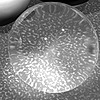HOME | DD
 Meztli72 — Year Of The Goat Stylized Logo (Mod By Me) [NO AI]
Meztli72 — Year Of The Goat Stylized Logo (Mod By Me) [NO AI]

#artistic #birds #blackandwhite #bw #chinese #chinesezodiac #decoration #flowers #goat #logo #nature #ornament #ram #sheep #stars #zodiac
Published: 2024-02-23 04:15:37 +0000 UTC; Views: 588; Favourites: 18; Downloads: 0
Redirect to original
Description
WARNING: THIS IS NOT AI!!!The artwork used in my conlang sample:
Details about my conlang:
Meet my new conlang!!! :)Yay!!Since a lot of months, perhaps years (I bet years) I had a special idea inside my mind/head, always hoping to bring it to life, and finally, these last days I could do that because enough spare time.The year 2015, it seems, I created a conlang (constructed, artificial language) using just random words, so it passed into oblivion. But now, in 2024, everything is different. See my recent "text on paper" deviations (scans): I created a brand-new conlang which still doesn't have a name (any proposal???).This conlang is mainly based off Japanese and Quenya (which is also a conlang, created by the High Fantasy literature genius J.R.R. Tolkien).About 75% of vocabulary is Quenya, 20% is Japanese and the remaining 5% shares among several languages: Indonesian, Korean, Brazilian Portuguese, Chinese, Finnish, etc., even Xhosa. There are words which were somewhat altered on purpose to give a bit of originality to this project. I even did a random mumble-jumble for three or four words which sounds and look Japanese, but are not.About grammar: it's exactly identical to English one, except for the fact that some typical Japanese structures are used, for example, to apply future and past tense to actions (verbs).About script: this conlang is using Japanese kanji (Japanese version of Chinese characters) and a special script (for now) I invented which looks almost identical to kana script, mostly hiragana. Perhaps I should use a different script in the future, or use the same kana letters. For vocals, except "a" (ah), every letter uses a special mark (like the dakuten and handakuten in Japanese) just like Quenya does when using the Tengwar script; the marks are ", ^, ~ and ゜. Some kanji are extracted from Chinese when no one is available. Besides, there are special marks similar to small kana letters for special Japanese syllabes: a verbalization mark (converts a subject to verb) and a repetition mark (to repeat previous character). Also there is a plural mark and a negation mark as special characters.About pronunciation: it's like typical Latin/Indoeuropean based one, the classical five vocals a (ah as in "father"), e (eh as in "met"), i (ee as in "machine"), o (aw as in "bought") u (oo as in "tutor"). A vocal with umlaut (ä, ë, î, ö, ü) is pronounced either as a double one or to mark stress in the word, so umlaut always mark stress. "i" uses a ^ instead of an umlaut. Default stress are like in the word "wisdom", except for Japanese based words which almost always are pronounced as in the word "begin". Consonants are like Latin based languages. L sound is like Italian or Japanese, R have variable sound depending on prefered accent (flapped, rolled, even merged as L as in Japanese). Ideal sound is like merging Japanese and Quenya, I mean, to pronounce Japanese with some Quenya accent and to pronounce Quenya with a more or less strong Japanese accent. In Japanese words with the vocal "u", it can be pronounced either as in Japanese (similar to German "ü", sometimes almost silent) or as a normal Latin "u" (oo).So this language can be recognized as a "deformed imitation of Japanese", still useful as a normal language.For stereotypical Japanese words and ideas, this language preserves all that; for example:animation = änimeto animate = änimesurüanimated = änimeshitä or änime-da[past tense mark] = mashita[future tense mark] = shimas[to be] = des[not to be] = katades[there is/are] = garu[there is not/are not] = ga inai (for animated objects), ga arimasen (for inanimated ones)and many more!!Both Japanese and non-Japanese pairs/triplets/etc.:cold = samui, ringa [Quenya], fiu [Brazilian Portuguese]every day = mainichi, ilkwainär [Quenya]fish = sakana, linnwë [Quenya]ocean/sea = umi, baya [Quenya]welcome = irashaimasë, amatulya [Quenya]time = toki, yikan, kunna [cannot recall the origin]black = kuro, morë [Quenya]person = yin, nasë [Quenya]Japan = nihon, nippon, yapën [English]China = chügoku, chaina [English]planet = kusë, wakusë, elenbar [Quenya]Earth = chikyü, ambar [Quenya]please [with an order or suggestion] = kudasai, ekenin [Quenya]I'm sorry = gomen, nyerinkwa [Quenya]my name is = des, nanye [Quenya]goodbye = sayonara, avariël [Quenya], ava [Quenya], chiao [Italian]hello = konnichiwa, aia [Quenya], haia [Quenya+English]forest = mori, taurë [Quenya]heart = kokoro, enda [Quenya]also words which never sound Japanese:color = kala [English], kwila [Quenya]good luck = märiena [Quenya], manoi baruto [Quenya]no = lä [Quenya], nei [English]Which one to use??? I still don't know, all forms are worthy.This project is dedicated to the wonderful Japanese people and the great literature genius J.R.R. Tolkien.For more info and current examples please check out the deviations:,#SupportAmateurArtists #AmateurArtists,
Credits: unknown artist(s).
Conversion to black and white and slightly small modifications made by me.
Related content
Comments: 4

👍: 1 ⏩: 1

👍: 1 ⏩: 1

👍: 1 ⏩: 0

















